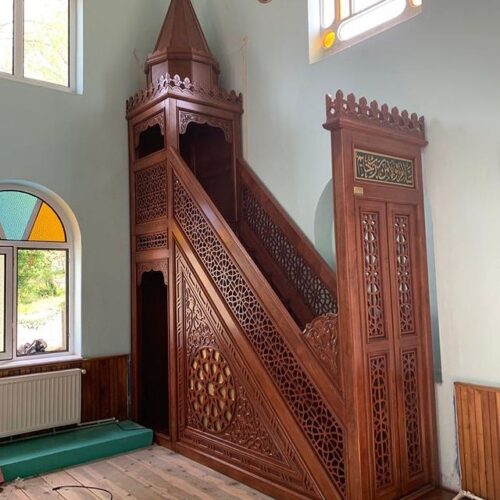The word minbar, which derives from the Arabic root “nebr” meaning “ascension” in the dictionary, means “the place where you ascend gradually”. Minbar; in general, it refers to the stepped architectural element in mosques where the imam rises to be seen better and to be heard better while delivering the sermon.
Minbar(Pulpit); In general, it refers to the stepped architectural element in mosques where the imam rises to be seen better and to be heard better while delivering the sermon.
According to rumors, the first person to use the pulpit was the Prophet Abraham. Hassan b. For the first time in Islam, the pulpit was called the minbar, which was temporarily set up in Masjid an-Nabawi for Thabit to satirize the polytheists.
In the 7th or 8th year of the Hijra, a pulpit consisting of two steps and a sitting place was built for the Mohammed (sav), who used to talk while leaning on a palm stump.
The minbar of the Mohammed(sav) undertook some functions beyond the will of the sermon in the early periods when the mosque was the center of the state administration. The caliphs were taking allegiance on this pulpit, and the kadis were looking at some cases in front of this minbar, with the thought that those who would take the oath or testify would refrain from telling lies by being influenced by it.
The minbar, which was a place where the state was ruled and Islam was communicated in the first periods, became more aesthetically beautiful in the following periods, and its usage areas were narrowed as a place where imams gave sermons in mosques.
Today, with the development of audio and visual systems, their former importance in terms of functionality seems to have been lost, but the minbar is an indispensable part of mosque architecture.
The pulpit, which has appeared in different aesthetically different forms for centuries; As long as Islamic culture and architecture exists, it will find a place in mosques.
To reach all our minbar products, please click the link.
















